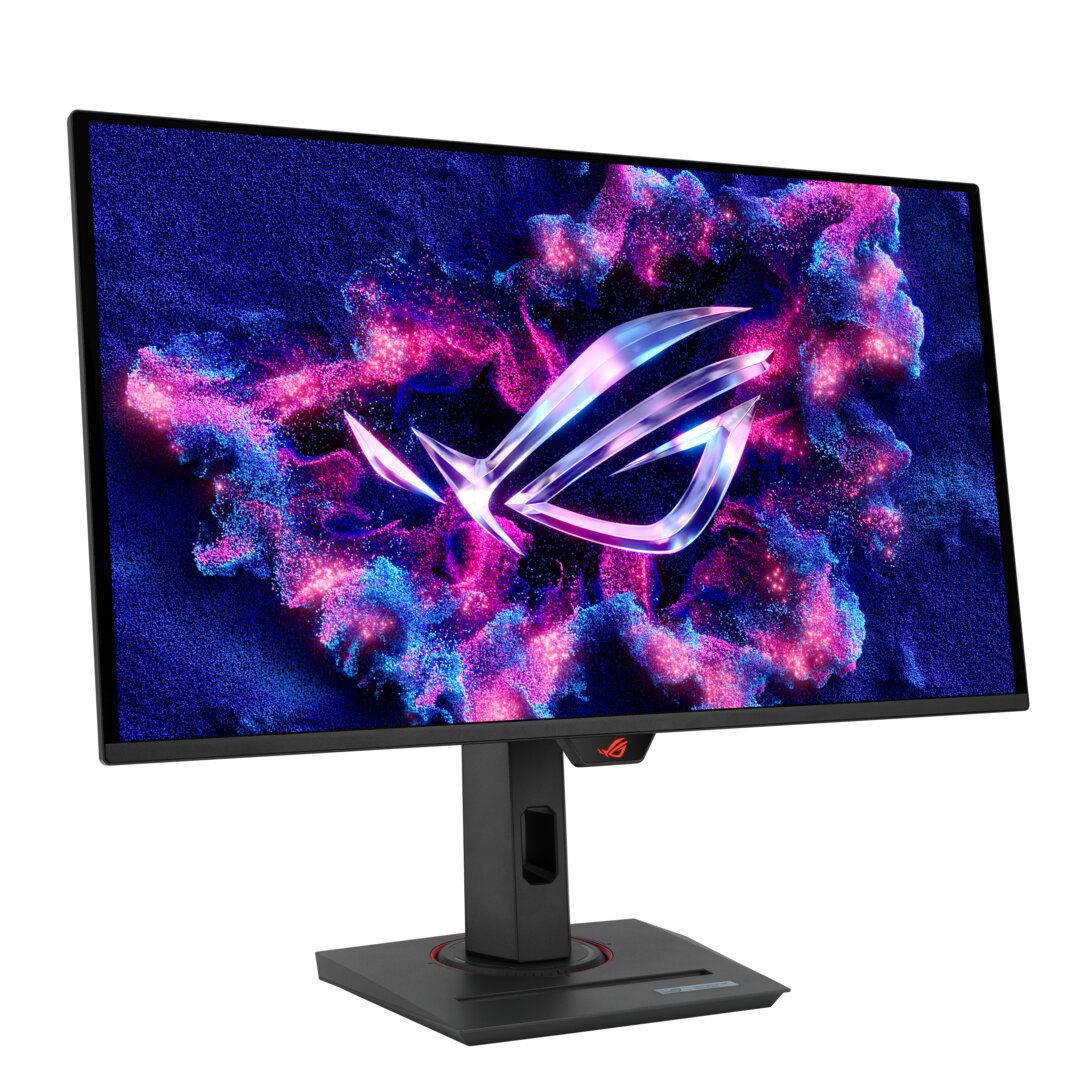ASUS ROG STRIX OLED XG27UCDMG: Without DP 2.1, UHD and 240 Hz are available for 300 euros less 18 comments

Image: Asus
With the XG27UCDMG, another OLED model, announced by ASUS at CES in January 2025, is now available. It offers UHD resolution at 240 Hz, but comes only with a DisplayPort 1.4 connection, which the required bandwidth cannot provide. The magic word is called “DSC”.
ASUS has now officially registered the ROG Strix OLED XG27UCDMG on April 1st. The latest model in Asus’ OLED portfolio is similar to the top model ROG Swift OLED PG27UCDM, which was released in February. In addition to a different base and a power supply that’s no longer inside, there’s another change: DisplayPort 1.4 is used instead of DisplayPort 2.1. ROG STRIX OLED XG27UCDMG
ROG Strix OLED XG27UCDMG (Image: ASUS) Image 1 of 6 ASUS ROG STRIX OLED XG27UCDMG ASUS ROG SWIFT OLED PG27UCDM Diagonal 26.5″ (67.3 cm) Resolution 3840 × 2160 (4K UHD), 16:9, 166 ppi (GTG) Panel Samsung QD-OLED Straight shape Color depth (1.07 billion colors) Anti-glare evolution (anti-glare) 1000 cd/m² (HDR, selective) Contrast 1,500,000:1 (static) HDR VESA Dischdr True Black 400, HDR10, Dolby Vision Angle 178° / 178° Vertical Sync Sync Sync Sync, AMD. Premium Pro (with stand) LFC, with HDR), NVIDIA G-Sync Compatible Connections 1x DisplayPort 1.4, 2x HDMI 2.1, 1x USB-C 3.0 with DisplayPort 1.4, 1x USB-B 3.0, 3x USB-A 3.0, 1x 3.5mm Jack-Out, 1x AC-in C14 (Network Connection) 1x DisplayPort 2.1, 2x HDMI 2.1, 1x USB-C. DisplayPort 1.4, 1x USB-B 3.0, 3x US 3.5mm Jack-Out, 1x AC-IN C14 (Network Connection)

While the flagship ROG SWIFT PG27UCDM has a DisplayPort 2.1 connection, the ROG Strrix only offers a DisplayPort 1.4 port. Both models use the same Samsung panel, with the same high resolution and high frame rate.
If you calculate the bandwidth requirements for a resolution of 3840 x 2160 at 240 Hz, a 10-bit color depth, and 4:4:4 chroma subsampling, i.e., without color dumping, the formula yields the following:
DisplayPort 1.4b is native, but only supports 32.4 Gbps. Only with DisplayPort 2.0/2.1, up to 77 Gbps in the fastest mode. Display Stream Compression Helps
To be able to display the full resolution without a reduced refresh rate, monitor manufacturers use Display Stream Compression (DSC) technology. This compression method has been supported on DisplayPort since version 1.4b and HDMI since 2.1.
DSC reduces bandwidth requirements by a factor of 3.75. Even the 9-year-old DisplayPort 1.4b connector still looks good and could even display UHD at 360 Hz. However, depending on the degree of compression, image quality may decline. In this case, however, this shouldn’t be noticeable. Many other monitors offer the same combination via DP1.4 with DSC, and no complaints have yet been noted.
New Firmware in April
With the availability report for the new XG27UCDMG model, ASUS also announced new firmware, which also applies to the top model PG27UCDM. This is intended to improve the neo proximity sensor, which in both models ensures that you can recognize whether someone is sitting in front of the screen or not and, if necessary, dims the screen.
Other OLED protection features such as pixel cleaning, screen saver, and stable task recognition are also included, as well as a three-year manufacturer‘s warranty.
Price and Availability
The new XG27UCDMG model is now available from 1,150 euros.
The flagship PG27UCDM has been available from 1,450 euros since February.
THEMES: 4K Asus DisplayPort Ultra HD OLED Monitor. Source: Asus

Élodie compares monitors for resolution, refresh rate, and colour accuracy to meet gamers’ and professionals’ needs.

